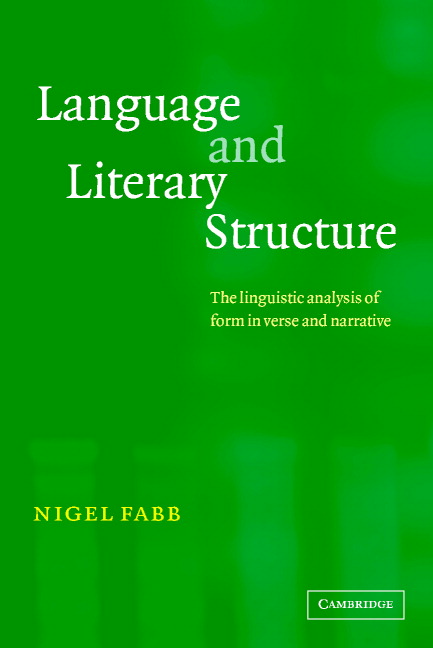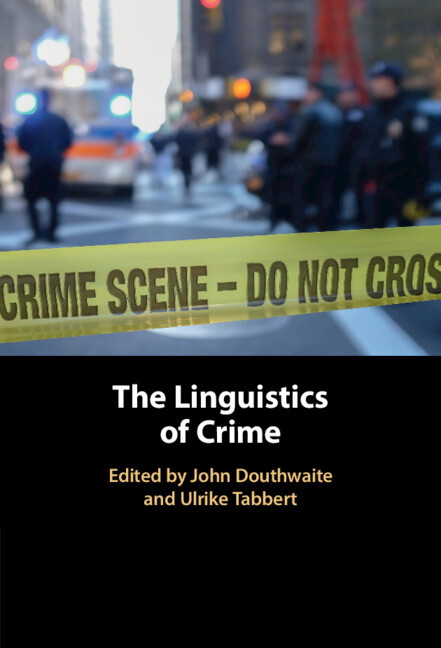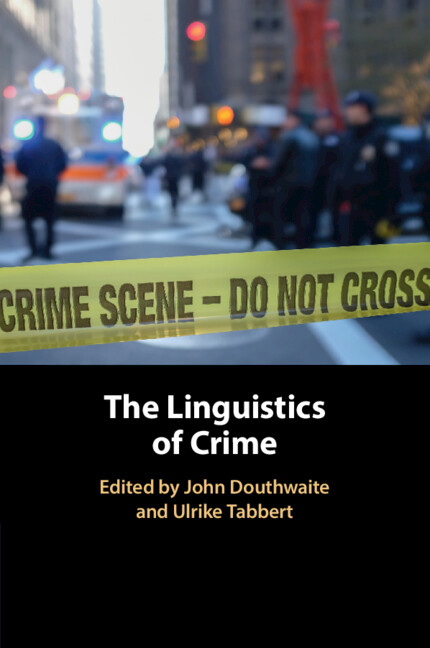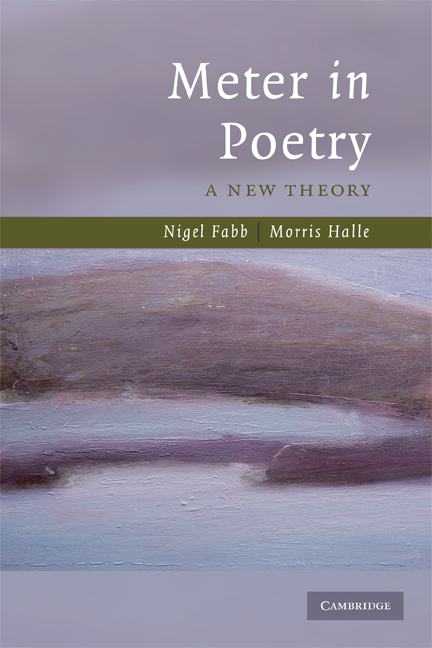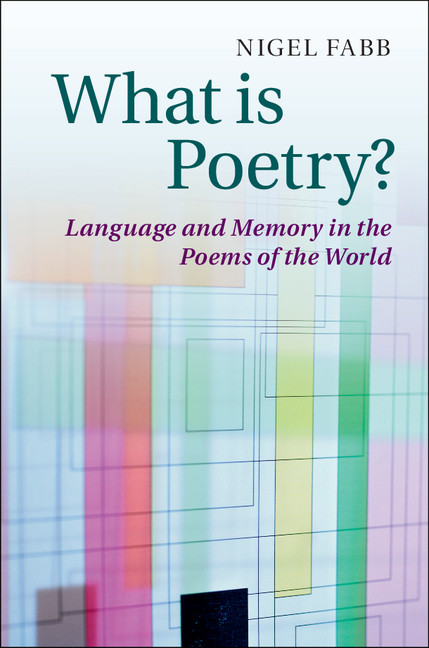Language and Literary Structure
This theoretical study of linguistic structure in literature focuses on verse and narrative from a linguistic perspective. Nigel Fabb provides a simple and realistic linguistic explanation of poetic form in English from 1500-1900, drawing on the English and American verse and oral narrative tradition, as well as contemporary criticism. He offers a new linguistic approach to how metre and rhythm work in poetry, based on pragmatic theory. He provides a pragmatic explanation of formal ambiguity and indeterminacy and their aesthetic effects.
- A simple and realistic linguistic explanation of poetic form in English from 1500–1900
- An introduction to a new linguistic theory of poetic metre
- A pragmatic explanation of formal ambiguity and indeterminacy and their aesthetic effects
Reviews & endorsements
'This book presents a highly original linguistic approach to literary structure, and especially to English metrical verse.' Journal of Literary Semantics
'… an interesting addition to the linguistic study of verse … Language and Literary Structure is a significant contribution to the linguistic analysis of literature. It describes and analyzes a broader set of English verse than previous generative accounts … The writing is clear throughout the book … Language and Literary Structure could easily serve as the textbook in an advanced course on metrics … the ongoing and active debate over t his makes Fabb's work both timely and relevant … Language and Literary Structure will prove useful to both the linguist and the literary scholar … The book poses interesting answers to provocative questions …' Journal of Linguistics
Product details
September 2002Paperback
9780521796989
240 pages
228 × 152 × 17 mm
0.386kg
1 b/w illus. 27 tables
Available
Table of Contents
- 1. Literary form
- 2. Generated metrical form
- 3. Communicated form
- 4. The communication of metre
- 5. Lines
- 6. Line-groups in metrical verse and in narrative
- 7. Complexity.

